Juicing is a great way to get a quick boost of vitamins and minerals, and oranges are a classic choice for a delicious and healthy juice. But with so many types of oranges available, which are the best oranges for juicing?
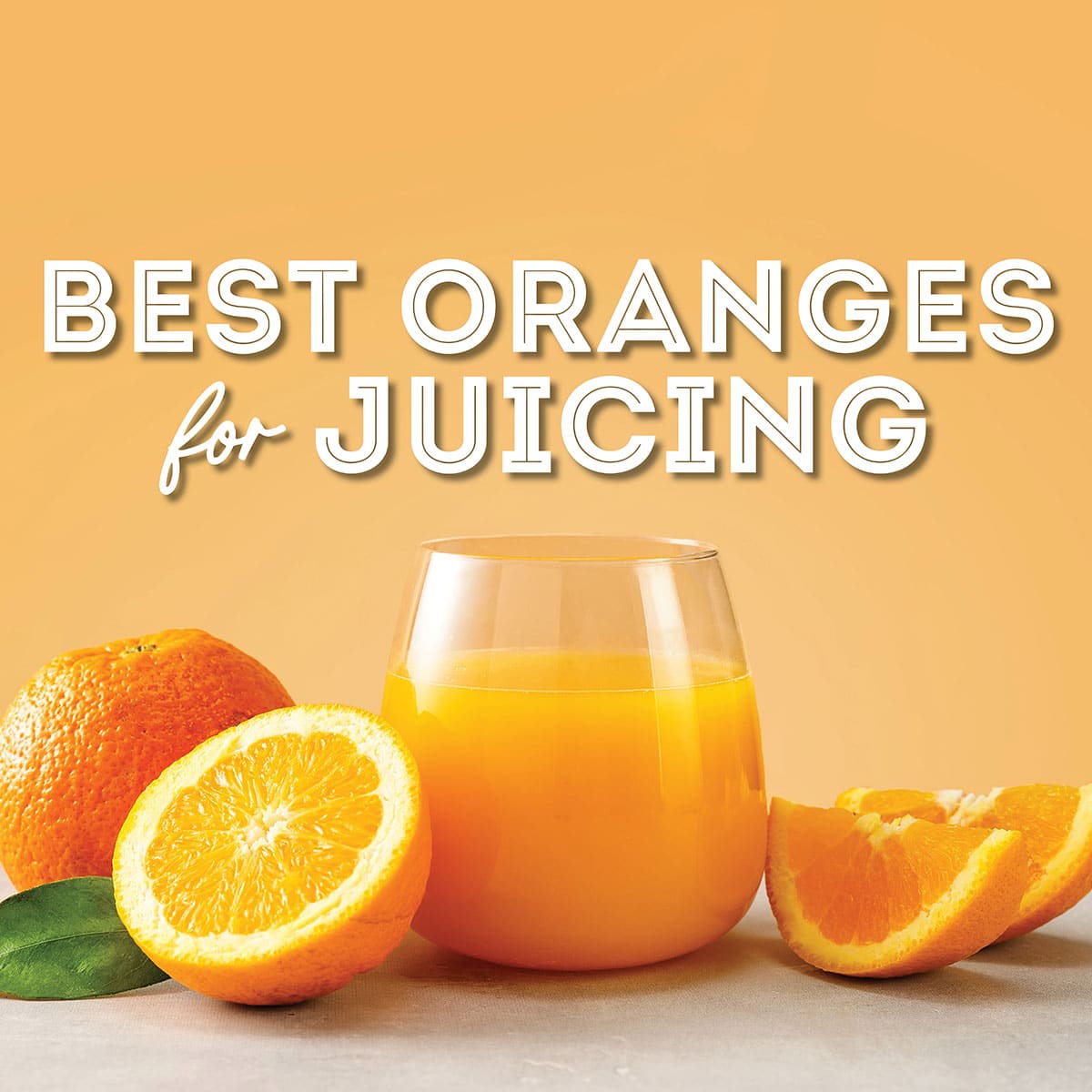
Oranges are a delicious and nutritious fruit that are widely enjoyed for their sweet and tangy flavor. They are also an excellent source of vitamin C and other essential nutrients, making them a great choice for juicing. But with so many different types of oranges available, it can be hard to know which ones are the best for juicing.
In this post, we will take a closer look at some of the best types of oranges for juicing, including their flavor profile, nutritional content, and other key factors to consider. Whether you’re a beginner juicer or an experienced pro, you’ll find plenty of valuable information in this post to help you choose the perfect oranges for your next juice recipe.
History of Orange Juice
Orange juice took off in popularity in the USA after the Second World War. The ravages of scurvy were well known to military forces around the world for over a hundred years, and during WWII the American Army was looking for a palatable way to get soldiers to consume vitamin C. The Department of Defense and Florida Department of Citrus teamed up to develop a superior canned orange juice concentrate. They succeeded, but not until after the war had ended. The upside was that within a few years commercial plants in Florida were producing millions of gallons of concentrate each year and the American population couldn’t get enough of it.
Orange Trivia
What can an orange peel be used for? (scroll to the end of this post for the answer!)
a. Leave it for Santa if you never want him to come again
b. To burst a balloon
c. To remove some stains from clothes
d. To scare away rats and mice with its smell
Store Bought vs. Fresh
What types of oranges do the store bought brands use in their OJ?
The favorite orange among American commercial orange juice makers, like Tropicana and Minute Maid, is the Valencia orange grown in Florida. Valencia isn’t the only variety used as the pineapple orange, Washington navel orange, Hamlin, and sometimes a few others are used commercially. The plants at these companies produce OJ year round, and often switch orange types used based on what is in season. Valencia oranges peak between March and June, while others like Hamlin don’t peak until late fall. For your home squeezed juice you have all sorts of options, and don’t have to consider what oranges you can get in mass quantities and at the right price. You actually have more ability to experiment with different oranges to see what you like best.
How is commercial OJ made?
Commercial orange juice, unlike your homemade OJ, needs to have a long shelf life, and is therefore made by pasteurizing the juice. Unfortunately, this process affects the taste, so producers add flavorings generally made from parts of oranges. It is sometimes also made by concentrating the juice and later adding water back into the concentrate before packaging. We aren’t saying this is necessarily bad or that it leads to an inferior product. The juice you buy at the grocery, however, is by necessity not the same juice you get by squeezing it yourself.
How To Make Freshly Squeezed Orange Juice
The easiest and most common way to make homemade fresh orange juice is to slice fresh oranges in half and manually squeeze them over a wide container using a manual orange juice reamer. Just put the orange half on top and press down while twisting until you have extracted all the juice the orange has to give. You may or may not have to filter the juice before drinking. You can, of course, also use any of the many Automatic Orange Juice Squeezers available. If you and your family really like juice, this is a pretty good option.
How much juice does one orange produce?
One medium-sized orange will produce about 1/4 cup (2 fluid ounces) of juice. This translates into 13-16 oranges per quart of orange juice.
Orange Juice Nutrition
One 8-ounce glass of orange juice typically has:
- 112 Calories
- 207% of the RDA of Vitamin C
- 19% of the RDA of folate
- 14% of the RDA of potassium
- 7% of the RDA of magnesium
The 8 ounce glass also contains 21g of sugar which constitutes 84 of the 112 calories (which is to say 75% of the calories come from sugar). While this sugar is natural fructose (not high fructose corn syrup style fructose or sucrose), it is still a lot of sugar.
Best Types of Oranges for Juicing
We are going to list these in mostly alphabetical order. We say mostly because the Valencia Orange is generally known as the best juicing orange, so Valencia is first on our list, then others are in alphabetical order.
- Valencia Oranges
- Blood Oranges
- Cara Cara Oranges
- Clementines
- Hamlin Oranges
- Lima Oranges
- Mandarin Oranges
- Navel Oranges
- Pineapple Oranges
- Satsuma Oranges
- Seville Oranges
- Tangelo Oranges
- Tangerines
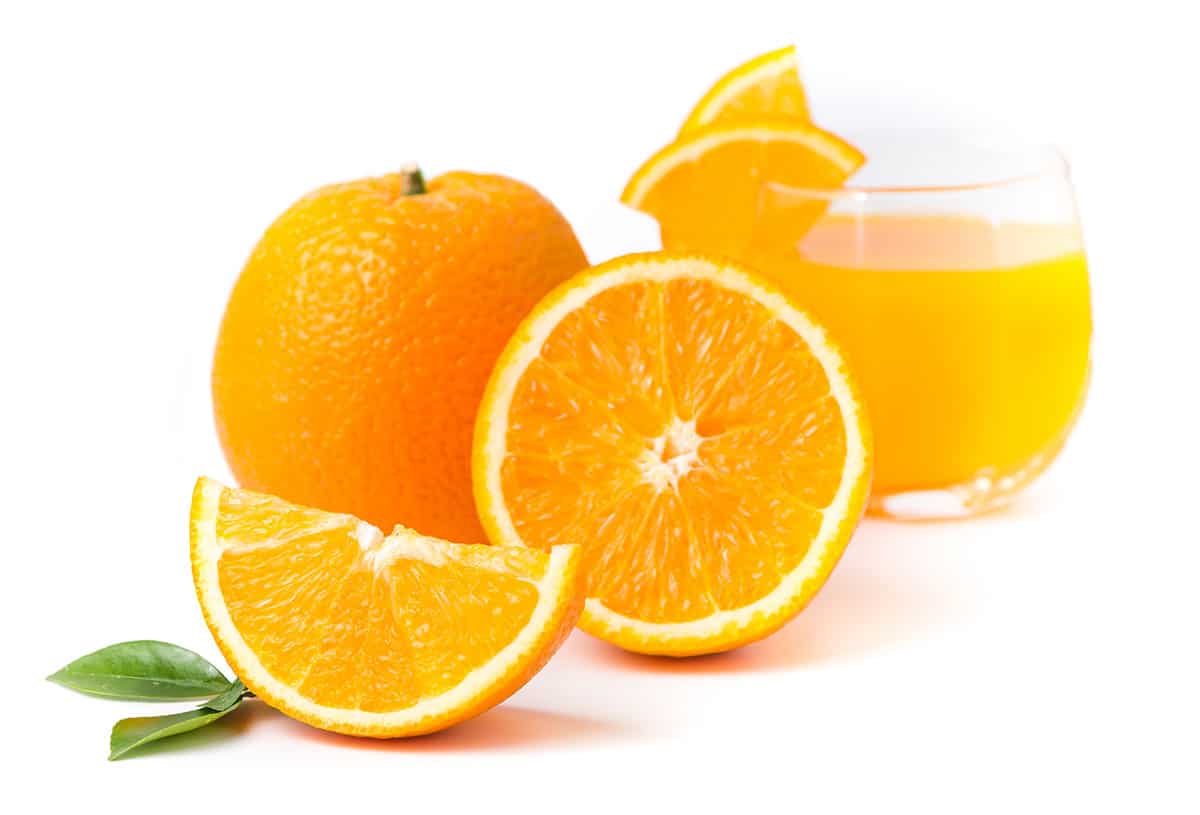
Valencia Oranges
Valencia oranges are named after Valencia, Spain though they originated in the United States. They are a hybrid orange produced by a Mr. William Wolfskill in California in the 1800s. They are grown commercially in both California and Florida primarily as juice oranges, but their taste certainly supports eating them raw as well. So, while this post is about juicing you might try them in our favorite Orange Smoothie Bowl.
Valencia oranges get the nod as best juicing orange because they are very juicy and produce a lot of OJ, are very sweet, seedless, fairly large, and abundantly available as they are available nearly year-round peaking between March and June. They are a great option for making your own orange juice.
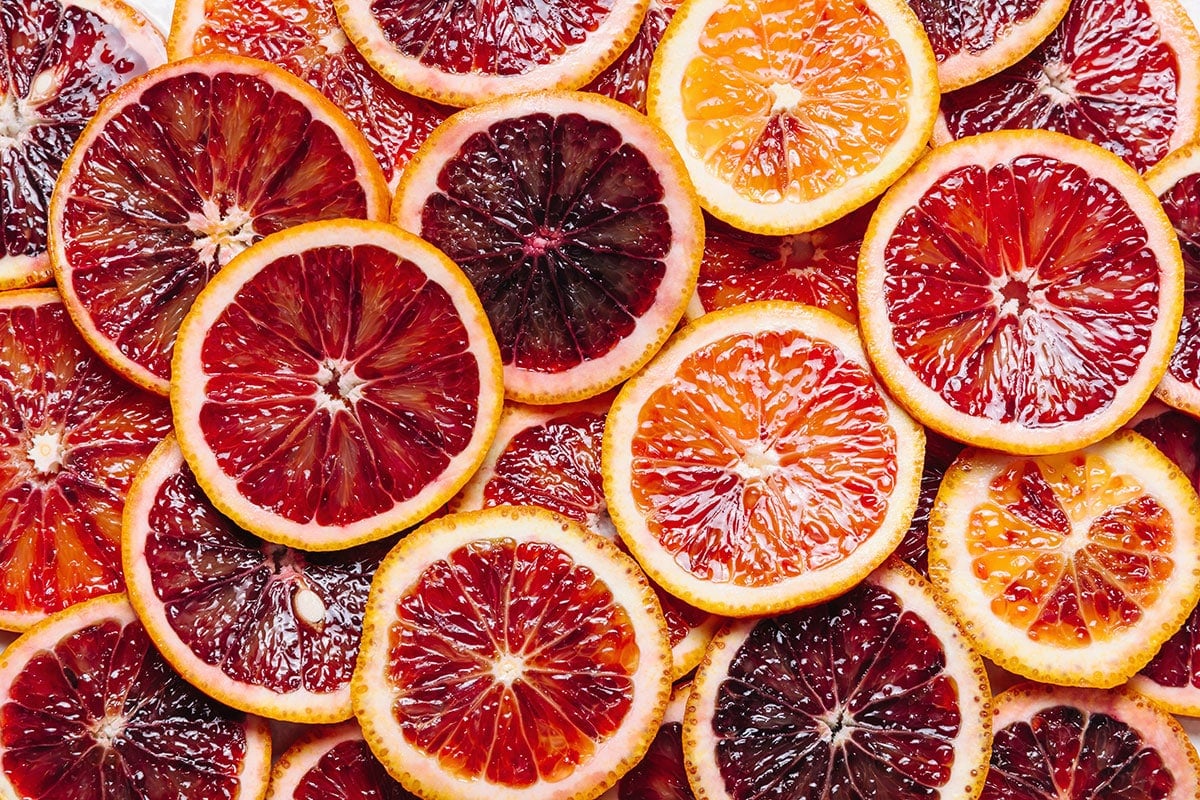
Blood Oranges
If you are looking for OJ with a decidedly healthy nutrition profile, Blood Oranges are a good bet. They are an orange mutation created by nature (vs a human induced hybrid). They are rich in anthocyanins which gives them their blood red pulp, but also a beneficial antioxidant component. The anthocyanins develop due to a combination of warm days and cool nights. Besides their extra health benefits, blood orange’s distinct red colors make for unique juice. Blood oranges are not quite as sweet as Valencia and can have a bit of tartness, so they aren’t the orange for everyone. If you don’t like your OJ on the sweet side, we recommend experimenting with a combination of blood oranges and another variety to find the taste you like best.
The downside to blood oranges is that they are in season January to April, but you may consider this an advantage as this is the period that the Valencia and other oranges are less available.
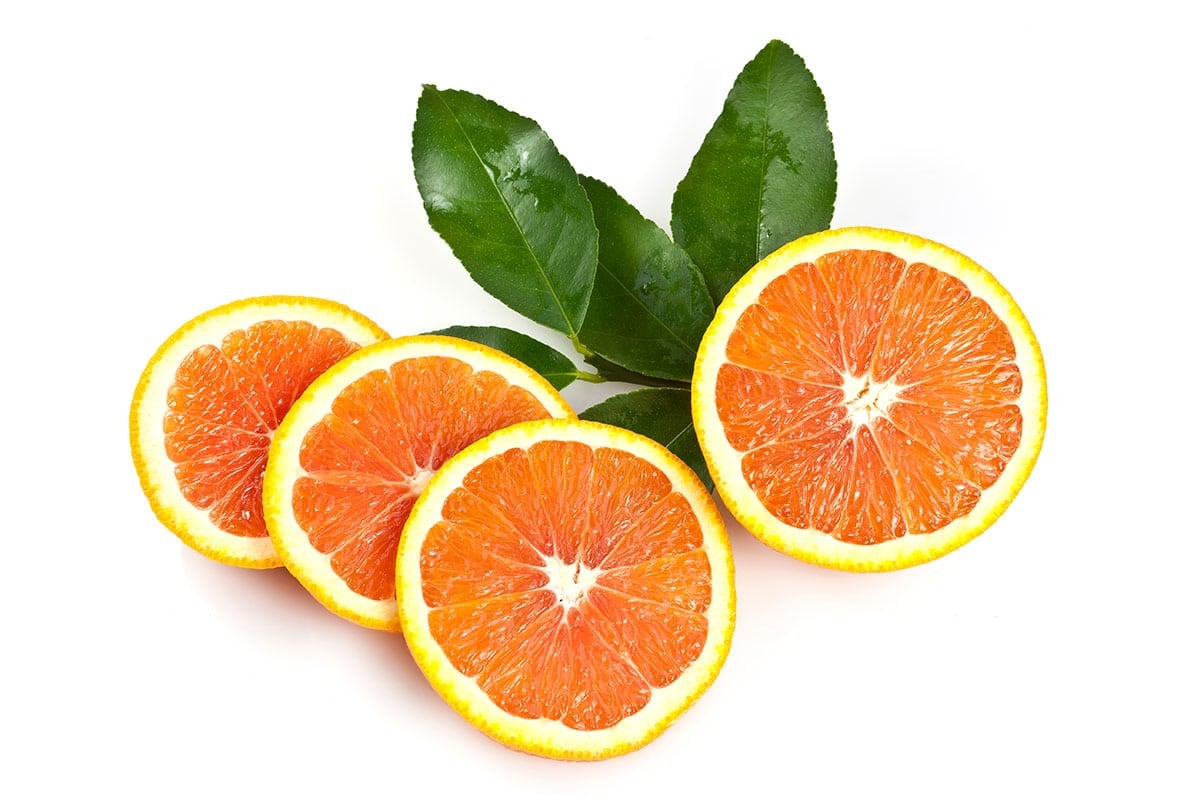
Cara Cara Oranges
Cara Cara oranges have a unique pink flesh making a juice that looks more like grapefruit juice. They have a popular sweet tart flavor with a hint of cranberry or raspberry. Cara Cara are medium sized seedless oranges, so each fruit should yield around ¼ cup of juice.
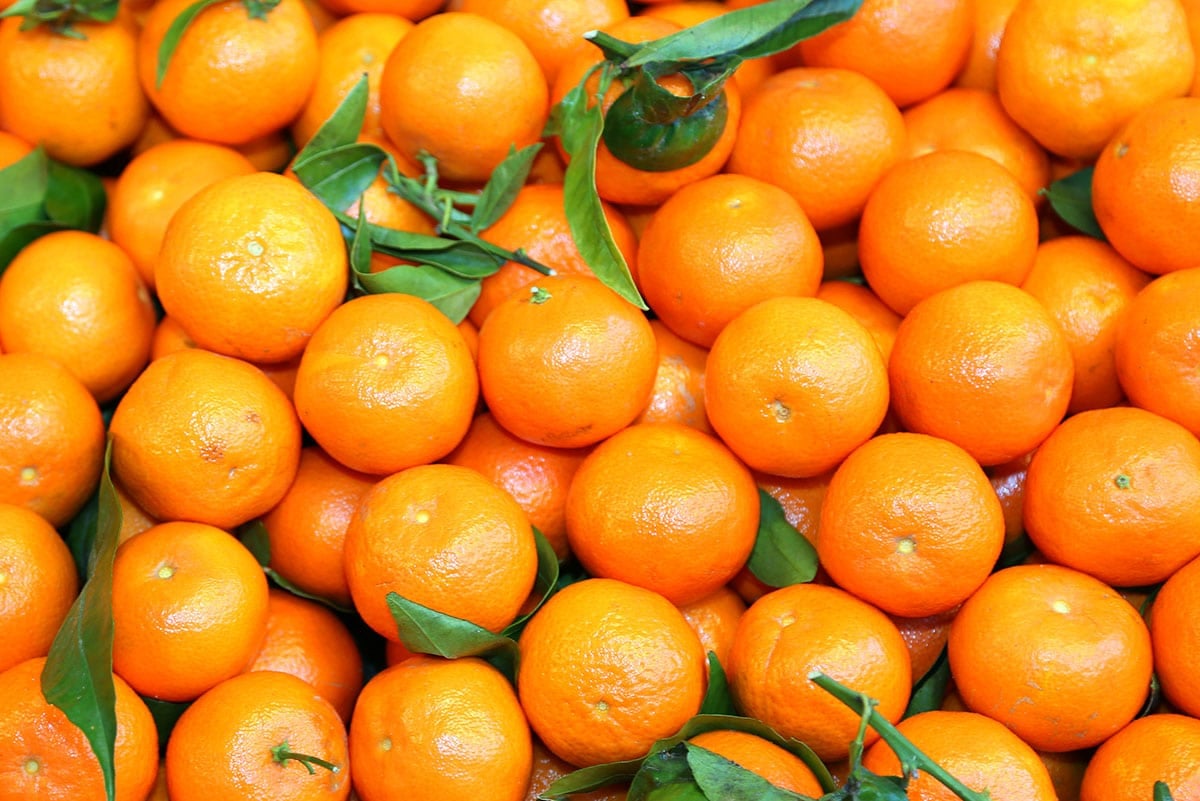
Clementines
Clementines are a hybrid between mandarin and sweet orange, but most closely resemble mandarins. You probably know them by the trademark names Cuties or Halos. Like mandarins they are small, have a great sweet taste, are easy to peel, and make great snacks. They also make pretty good OJ, and until you squeeze them they can sit on the table in a bowl looking tempting and adorable.
There are varieties of clementines with no seeds for easy juicing which is a plus, but their small size means you need a lot of them to get a cup of OJ.
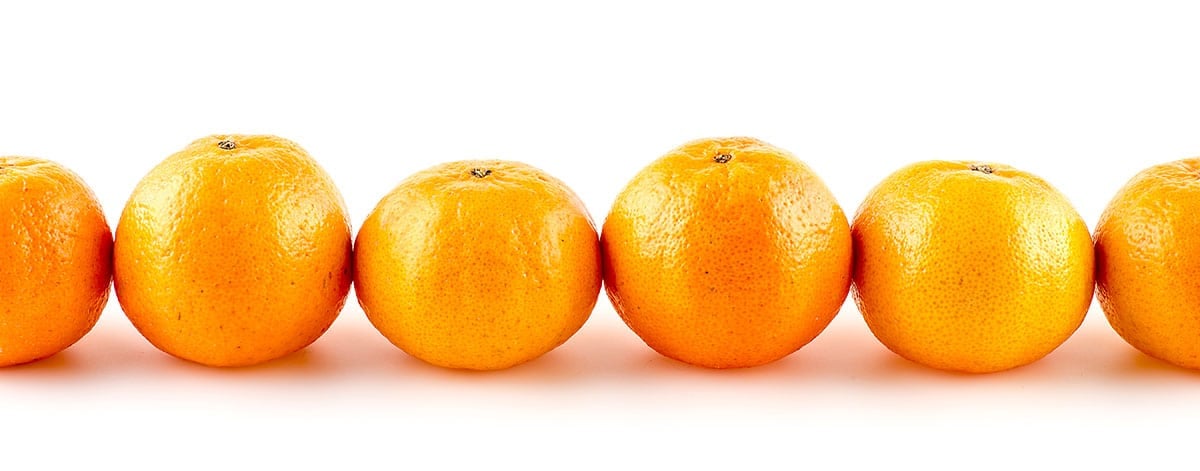
Hamlin Oranges
The Hamlin Orange was developed in Florida in 1879 produced by Mr. A.G. Hamlin. This is a round, sweet, juicy, and thin skinned orange with very few seeds making it great juiced or eaten fresh. The development of new orange varieties with so many superior characteristics has over time pushed some of the older varieties out of production, but that has been good for both consumers and growers. Hamlin oranges remain popular and are one of the types routinely used by the major orange juice manufacturers, so perhaps give them a try in your home squeezed orange juice.
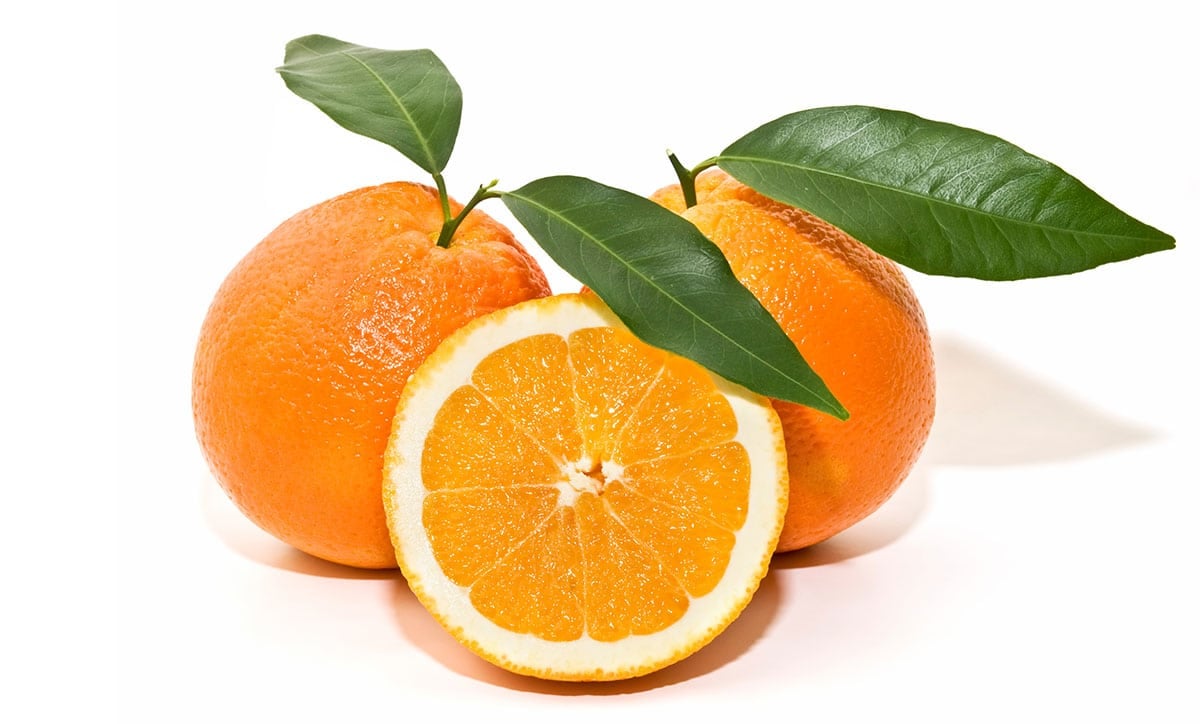
Lima Oranges
Lima Oranges are native to China, but today Brazil is the leading producer. They are a small to medium sized orange known for being sweet and juicy. They are also sometimes called acidless oranges as they are not at all tart. If you want a sweet cup of OJ give these a try or add them to your mix with other varieties.
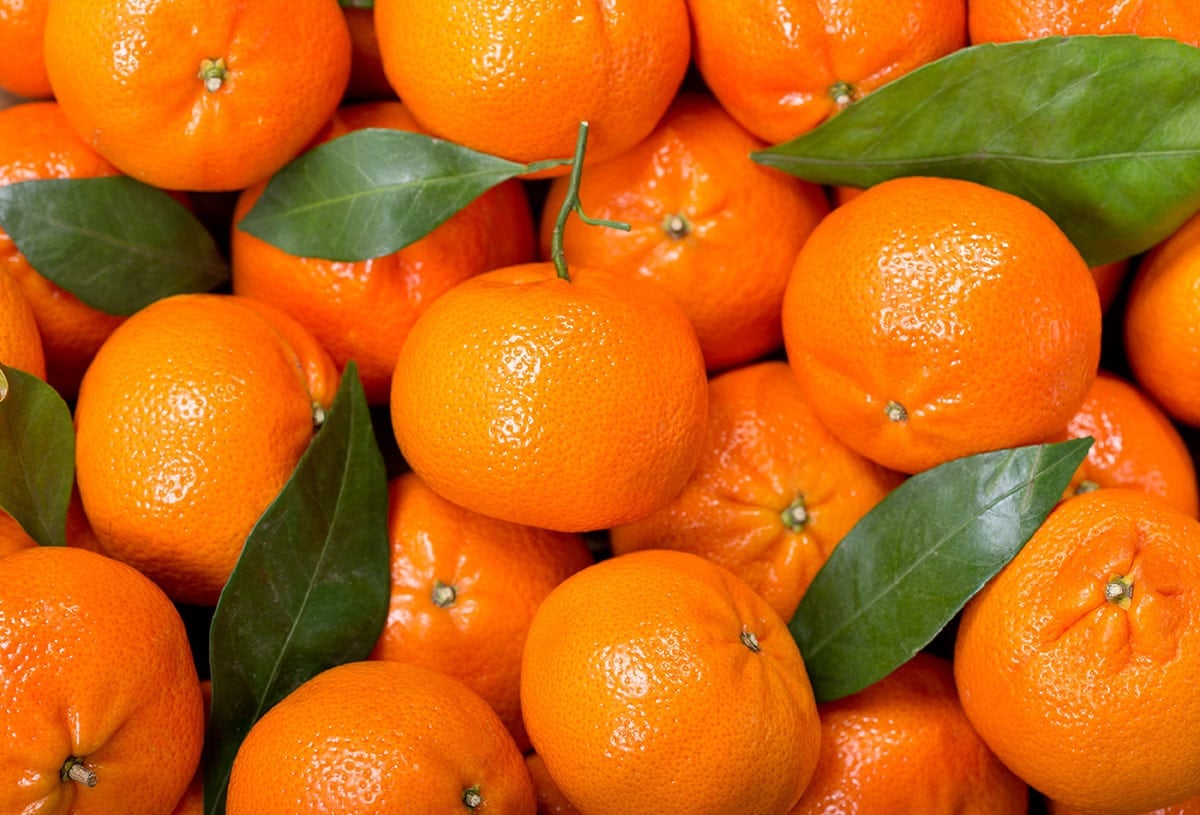
Mandarin Oranges
The name Mandarin comes from their Chinese origin. They are a small and easy peeling orange variety. There are multiple types of mandarin oranges, and they are all generally sweeter and less acidic than the larger orange varieties. Mandarins are in peak season February to April, and don’t provide as much juice as larger varieties. Expect to use 5-6 fruits to get a cup of OJ, but it will be some refreshingly sweet juice. If you want to know more about these popular oranges check out our Mandarin 101 Guide.
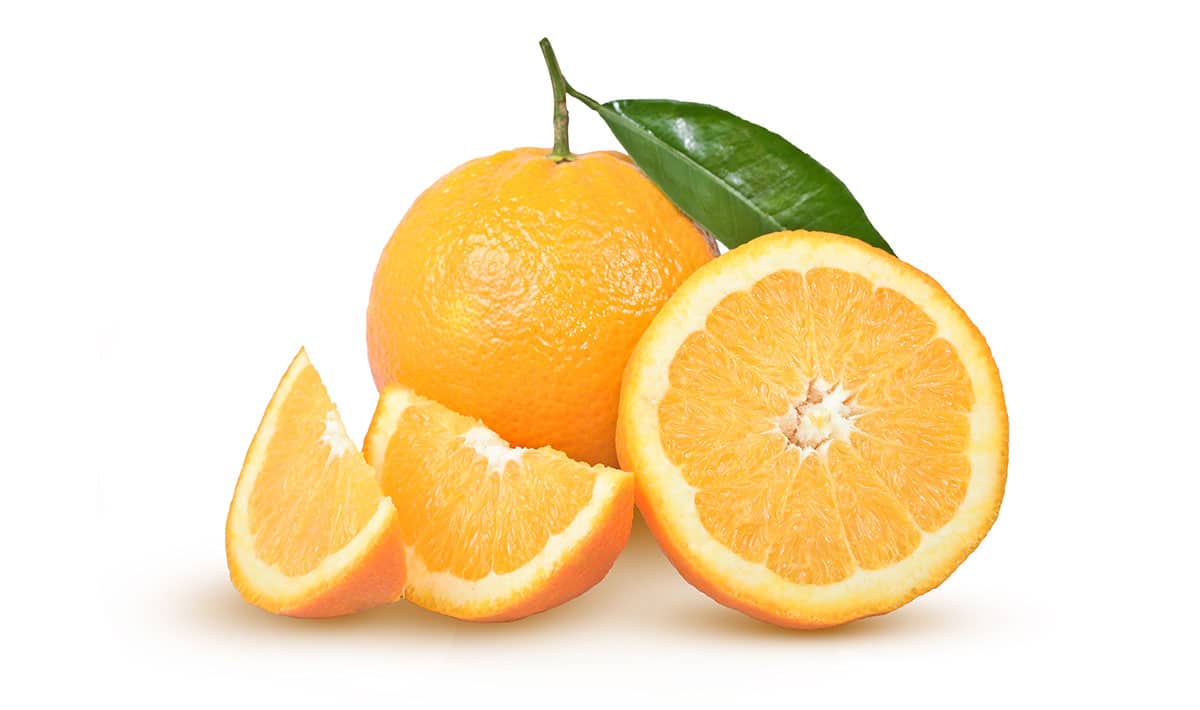
Navel Oranges
There are a handful of Navel Orange varieties, but we will discuss them as a group. Navel oranges were first “discovered” growing in Brazil in 1820. Their name came from the shape of their bottom resembling a human navel. Their popularity, however, comes from their reliable sweetness and juiciness. They are a seedless orange which does make juicing a bit tidier.
Navel oranges are also fairly large and juicy, so they yield a fair bit of OJ. You can almost always find some variety of navel orange at a reasonable price at your local grocery as they are available year round but peak between November and June. If you buy more than you need for juicing try this nice summer treat Homemade Orange Creamsicles.
Pineapple Oranges
Pineapple oranges are one of the oldest cultivated oranges in Florida, but production has fallen in recent years as seedless varieties grow in popularity. As a result, the pineapple orange has become difficult to find. They don’t taste like pineapples, but they are very juicy and sweet making them a great orange for homemade OJ. The name was given to them in the 1860s shortly after they were developed due to its fragrance which is a nice benefit while you squeeze them and drink your juice.
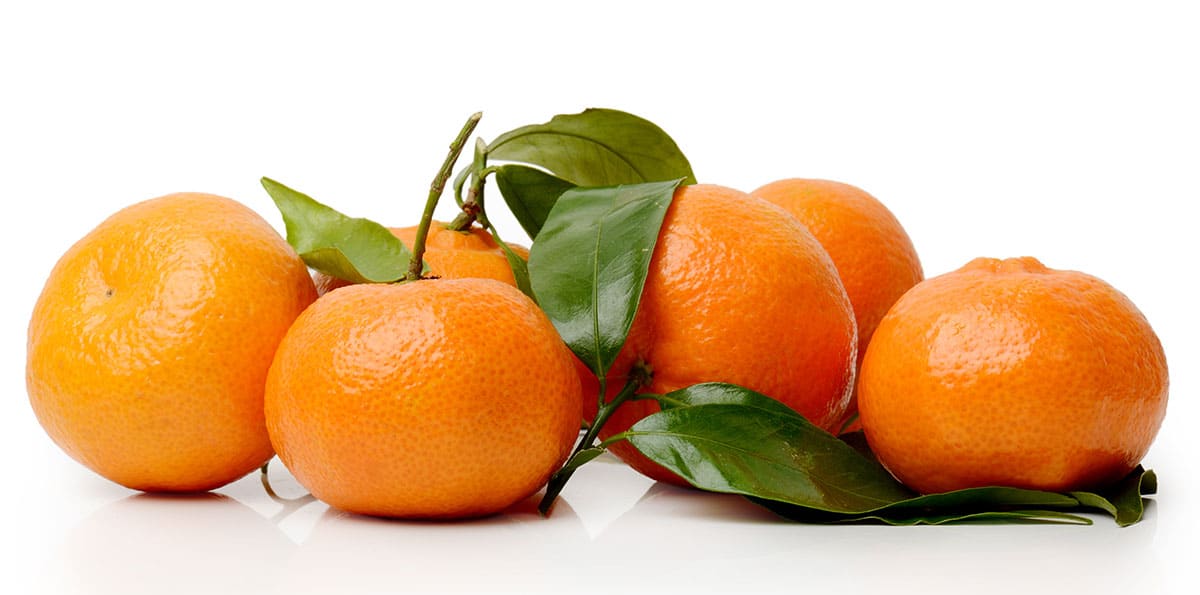
Satsuma Oranges
Satsuma oranges are a mandarin variety related to tangerines and clementines. Their claim to fame is being the orange most commonly used in canned mandarin oranges. The name is Japanese and goes back to the orange’s origin in Japan over 700 years ago. Like other mandarins, the Satsuma is sweet, seedless, juicy, and not surprisingly makes good juice though you will need quite a few of them.
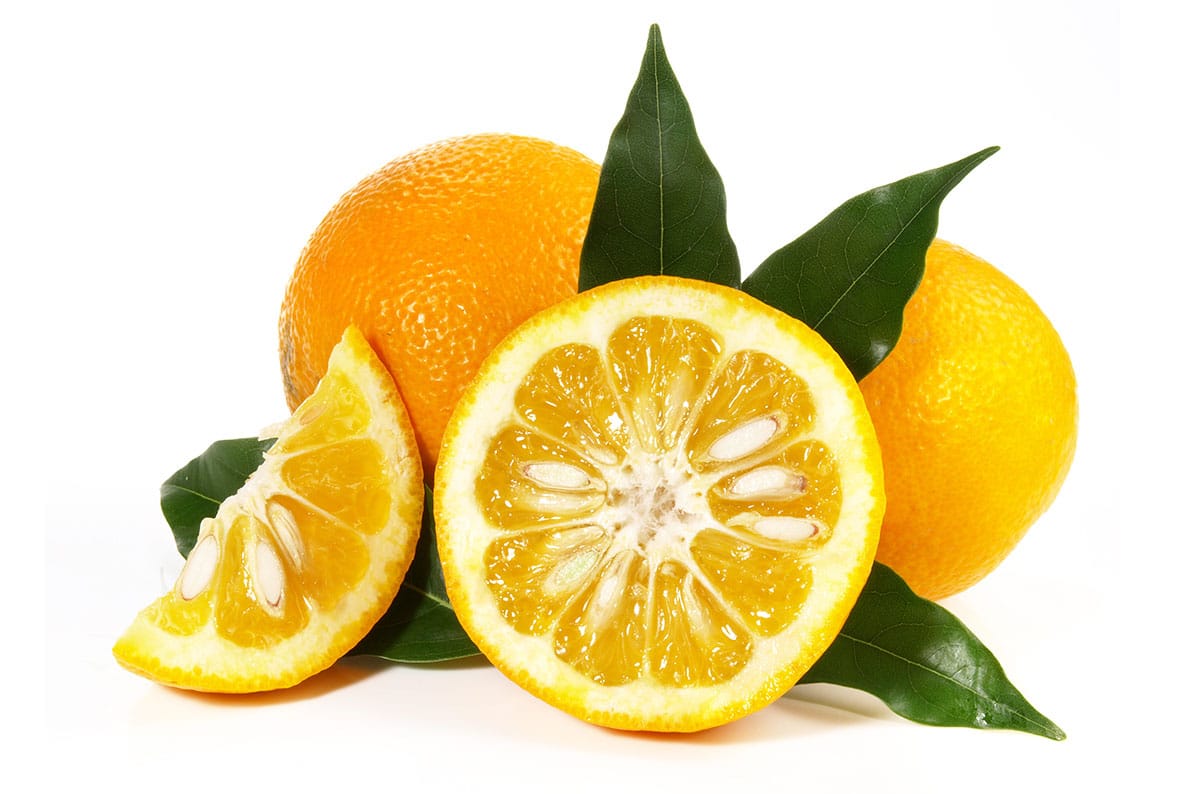
Seville Oranges
Seville Oranges originated in the Mediterranean region and are a cross between the pomelo and mandarin. Seville oranges are sometimes called sour oranges for good reason as they are known for their bitter & sour flavor. They are used primarily in sauces, vinaigrettes, and marinades. If, however, you are looking to try a more sour flavored juice, give Sevilles a try as juicing oranges.
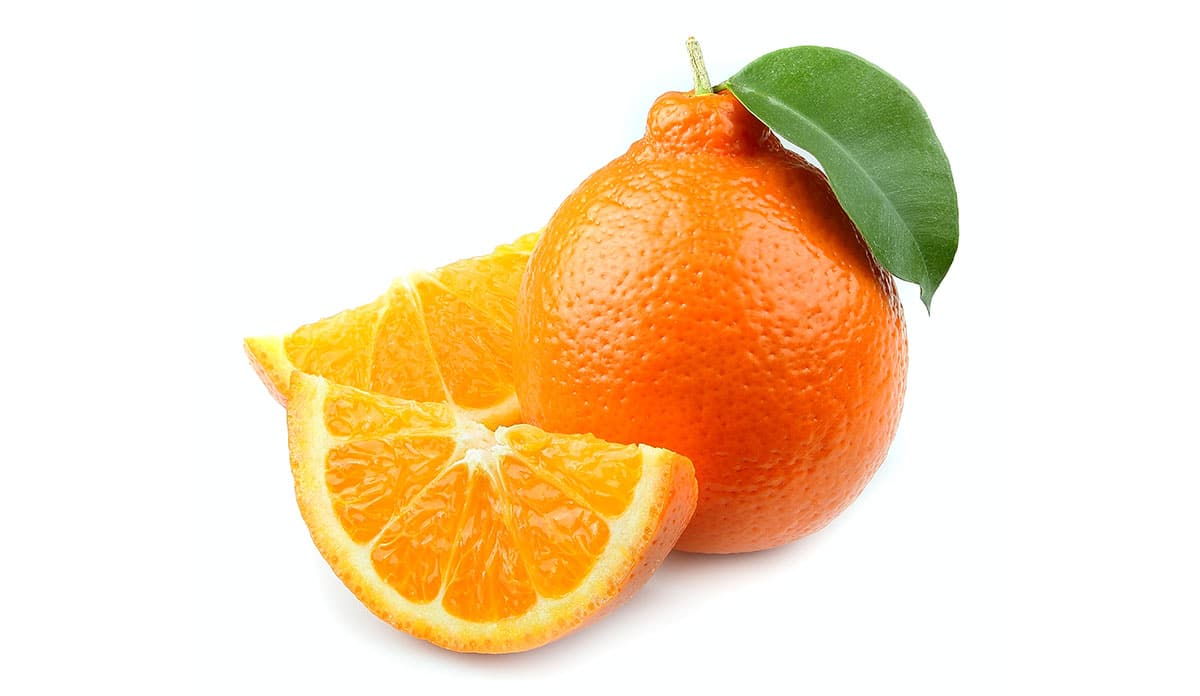
Tangelo Oranges
Tangelos are a hybrid of tangerine and pomelo, and are known for their sweetness and tart aftertaste. They are easily identified by their distinctive bump or nipple at the stem. They yield a good amount of juice if tartness is your preferred juice taste.
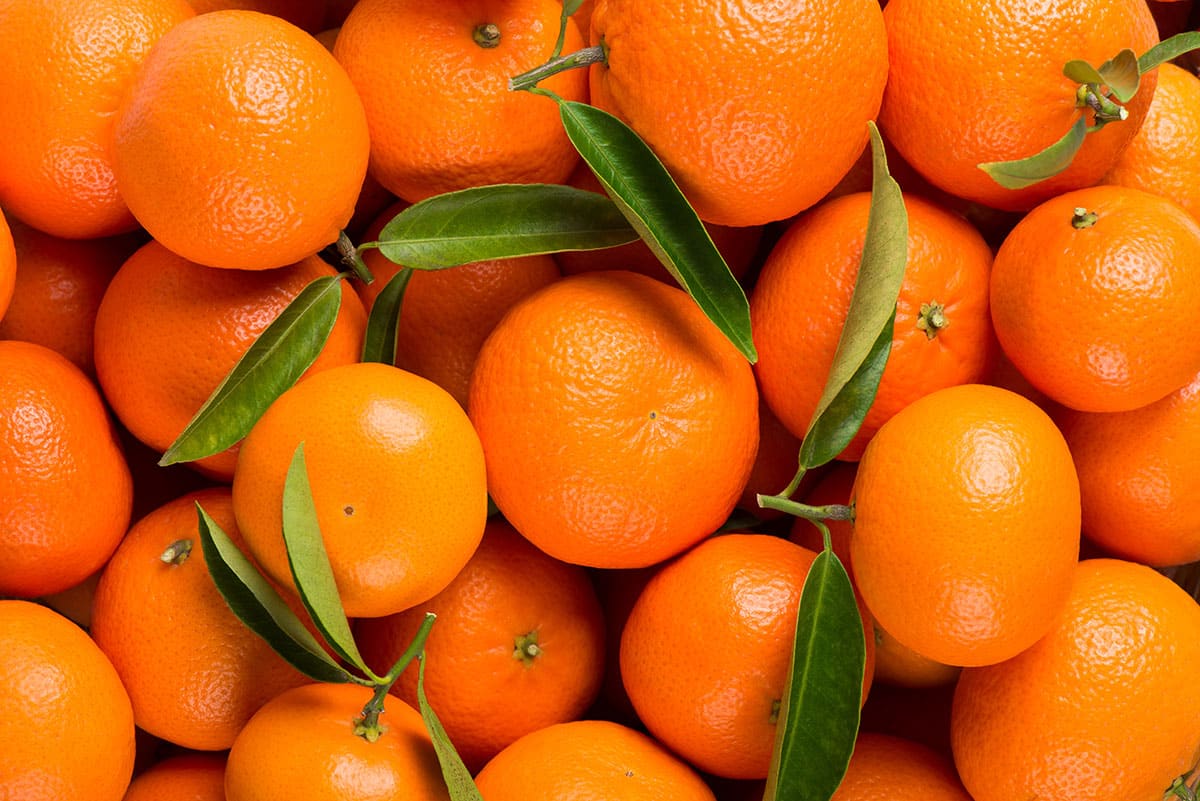
Tangerines
Tangerines are a variety of Mandarin. They are believed to have originated in India before spreading to China where they got the name Mandarin. From China they were carried to England and Europe before crossing the Mediterranean Sea to the Moroccan port of Tangier where the name Tangerine was adopted. Okay, that is probably more history than you wanted, but we think it is of interest in understanding how popular fruits spread across the globe over time!
Tangerines often contain no seeds making for easier juicing particularly if you want to use a blender vs hand squeezing. They can also have a bit of tartness, but some consider that preferable particularly if you like to mix varieties in your OJ. Tangerines are in season from Fall to Spring and generally at a reasonable price during these months.
The bottom line with making delicious orange juice is to experiment a bit to see which orange variety or combination of varieties works best for you.
Trivia Answer
The Answer is B. Oranges contain limonene oil which will dissolve a balloon’s rubber causing it to weaken and pop.

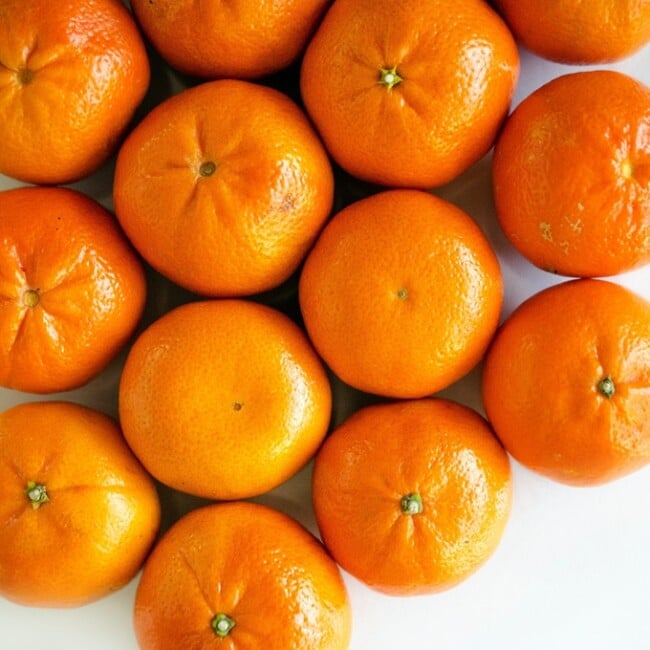
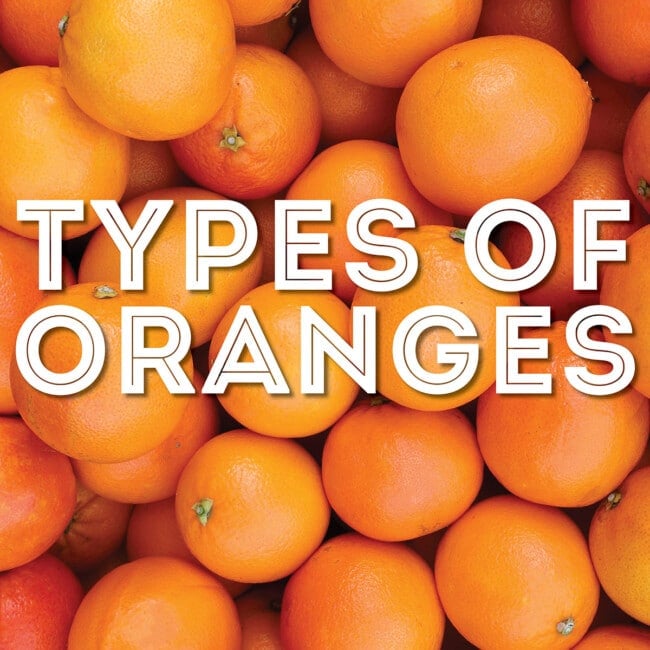
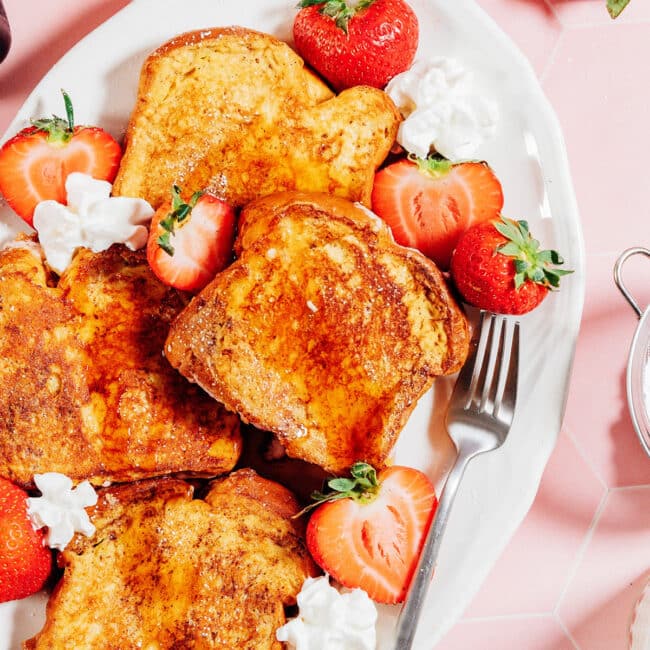

Leave a Comment